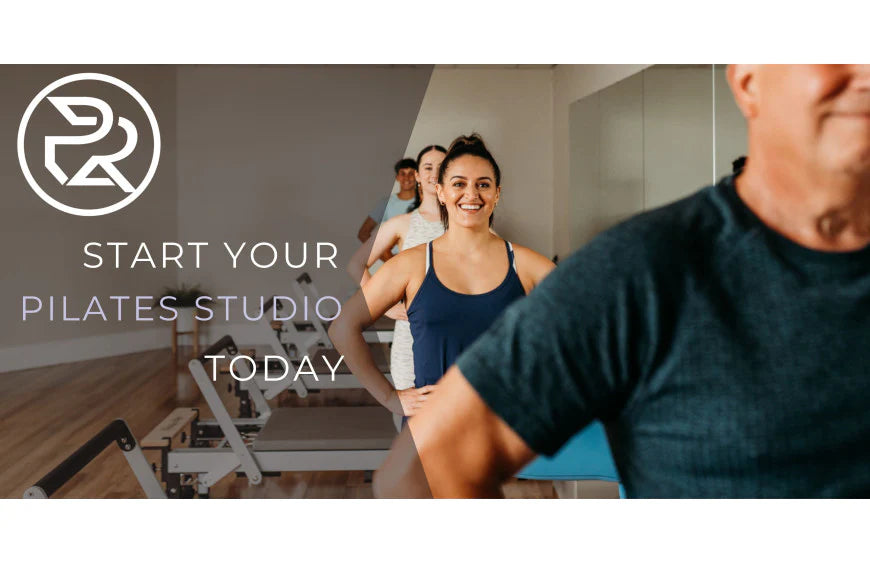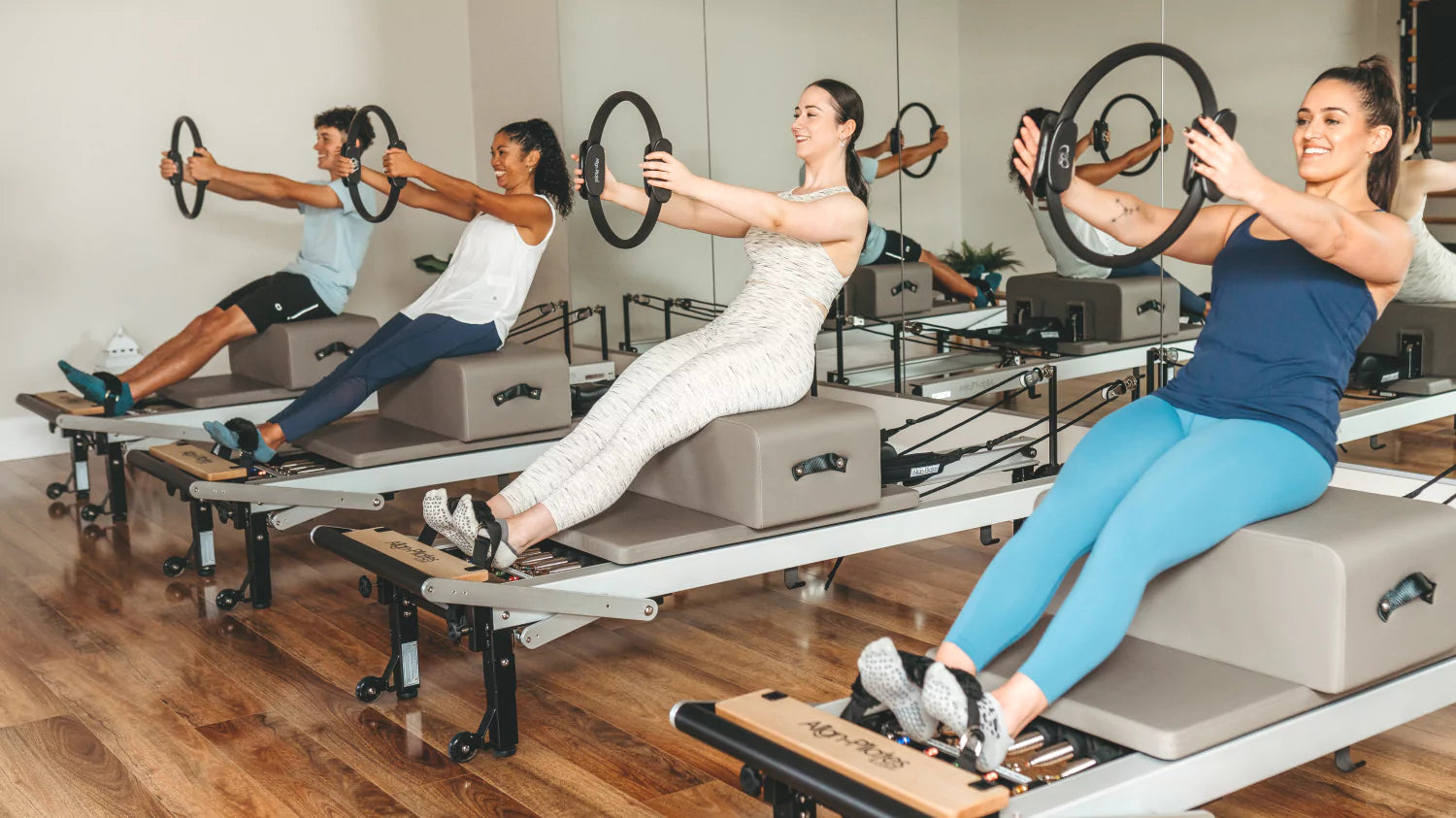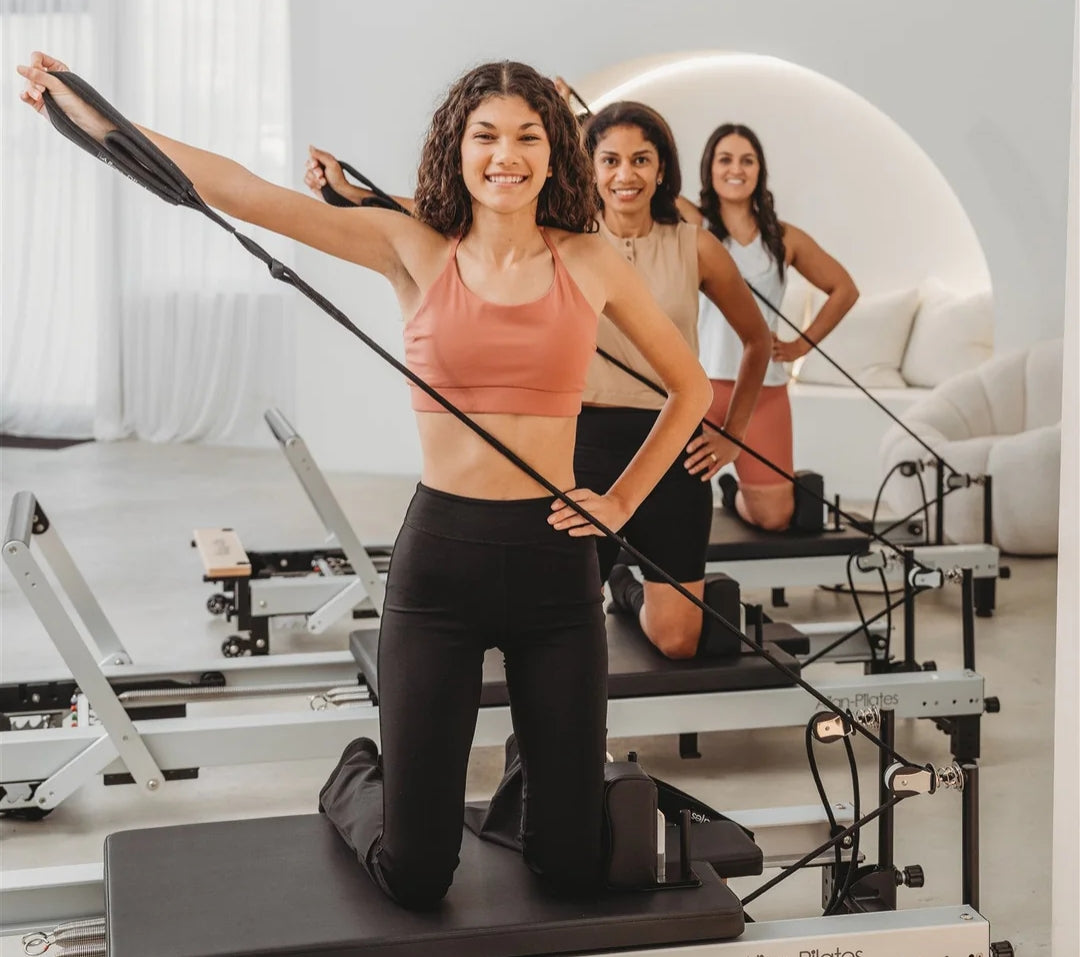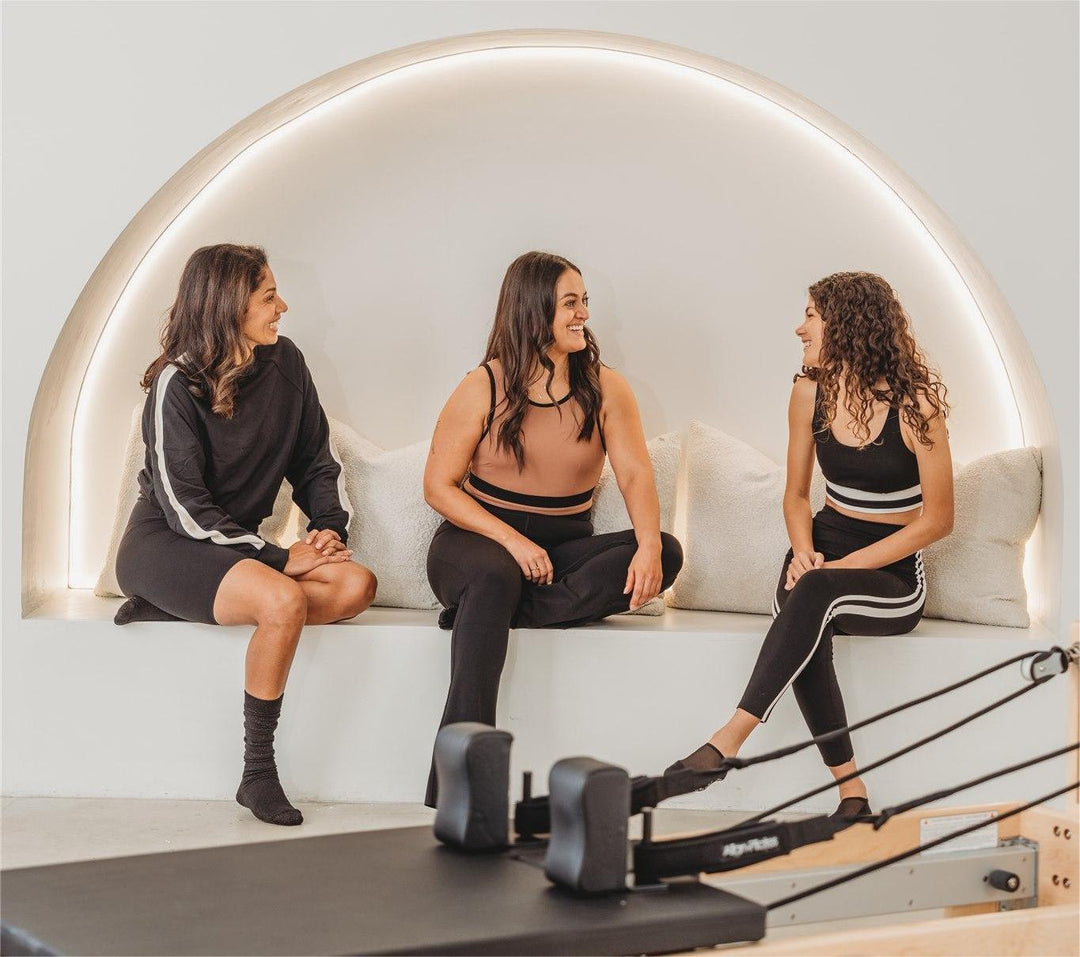
Thinking Of Starting A Pilates Studio?
Pilates is a health and fitness method that began in the early 1930s by Joseph Pilates and his wife, Clara. Over the year’s the Pilates method has been passed down through its Elders and evolved with the knowledge of science. Today, Pilates exists in both its original form – called Classical Pilates and in a modern form – called Contemporary Pilates.
Due to the many benefits that Pilates brings to the individual, a variety of different Pilates business models have also grown over time. With the explosion of studios, especially in the last 10 years throughout the world, Pilates has now become the chosen method of exercise for a wide variety of individuals.
Starting a fitness business can be a daunting, and often difficult decision to make. Like any business, many factors, including, legal, financial and auxiliary need to be taken into consideration if you are thinking of starting a Pilates studio. However, with the right plan and advice, you can realise your dreams of starting a studio.
- Business Model
- Franchise vs DIY
- Legalities
- Marketing
- Equipment
- What Pilates equipment will I need to start with?
- Should I have an 'In-Studio' shop?
Things to Consider when Starting a Pilates Studio
Regardless of whether you go with a Franchisor or decide to start your own Pilates studio there are a variety of things that you need to consider and plan for.
The list below is merely a starting place to instigate your thinking and planning for what needs to be done to get your dream off the ground. From this list, consider maybe drafting a vision board to physically manifest your dream studio, or create a spreadsheet detailing all the tasks required to build your business.
1. Business Model
What type of Pilates Studio would you like to run:
- Group Reformer Studio
- Semi Private/Privates
- Classical Studio
- Wellness Clinic
- Online studio
- Combination studio
- Group Reformer and Semi-private/private
- Group Reformer and Semi-private/private
- Gym and Group Reformer
- Group Reformer and Mat Pilates
- Group Reformer and Yoga
- Yoga, Mat Pilates and Barre
- Group Reformer, Mat Pilates, Yoga and Barre
- Group Reformer and Functional fitness
- Your own combination that is unique to you
The type of business model you choose will help you narrow down your business plan. Deciding on your model will help you to be more concise and definitive about the decisions that you need to make.
The final thing to consider with the business model is the pricing structure. Many businesses come undone because they haven’t run their figures properly with the model that they have chosen. Always work out what your break-even point is with the model that you choose.
By break-even point, we mean, ‘what is the minimum amount of money you need to cover all your expenses?’ How many clients then under your model will need to come through the doors each week to make sure that you break even? Any extra clients then give you your profit.
Pricing structures can vary for studios – from individual casual prices, to packages, to memberships to direct debits. Make sure to consult with your accountant on this so that you are set up for success. Once you have determined your break-even point, it is also important to ensure you have included paying yourself a liveable wage as well.
2. Franchise vs DIY
You’ve already put some thought into your Pilates studio:
- How you can do it better than the studio you are currently attending
- What you can offer your clients that will make you stand out
The decision now is do you go with a franchise or do you do it yourself.
In order to make this decision, you need to do some research into the advantages and limitations of both options. Table A summarises some of the key points when considering a Franchise.
Advantages
- Probability of success
- Proven line of business
- Pre-qualification of Franchisee
- Training - Franchisor Provided
- Financial Assistance - Franchisor Assistance
- Operating Benefits - Franchisor Aided
Limitations
- High Start-up costs
- Initial Franchise fee
- Investment costs
- Royalty Payments
- Advertising Costs
- Restrictions on Business Operations
- Financial Assistance Can Be Limited
- Loss of Independence
The ACCC (Australian Competition and Consumer Commission) has a wonderful resource called “Is Franchising for me?”. It gives detailed information about what to expect being a franchisee (you) and what to expect from the franchisor (business name).
Find resource here: (Australian Competition and Consumer Commission, “Is Franchising for me?”)
Ultimately, though, the decision to go with a franchise or not will be dependent on you and your personality.
- Are you independent?
- Do you like to do things your own way?
- Do you like to be in control?
- Do you like to make changes quickly?
If you answered yes to any of the above questions, then you will most likely find buying a Franchise constrictive and restraining, so you may need to consider doing it yourself.
This is not as daunting as it may, at first, seem. We’ve helped to take much of the leg work out of the task, by compiling some of the key things to ensure you’re covered when starting your own business.
3. Legalities
Every business has legal responsibilities at both a national and state level.
In Australia, whether you choose your structure as either a sole trader, partnership, or incorporated company, there are a variety of legal responsibilities that you will need to adhere to set your business up successfully:
- ABN (Australian Business Number is a unique 11 digit number that allows you to trade with other businesses in Australia)
- Insurances – including by not limited to public liability, professional indemnity, workers compensation, business insurance, motor vehicle property, home-based insurance. Think about all of the risks that you could encounter at the beginning and as your business grows. Having comprehensive insurance helps to minimise the impact of something going wrong in your business
- Leasing or buying your premise (Refer to a real estate agent or your accountant for this information)
- Wages – contractors or employees and the associated contracts and taxation office obligations (Refer to a HR consultant or your accountant)
- Studio booking system (ie Booking Essentials, Mind Body, Glofox, Momence etc)
4. Marketing
Marketing is not just Instagram and Facebook posts, although social media does play a role in marketing.
For any business to be successful, a marketing strategy needs to be considered to allow the business to scale and grow. Money can be wasted on marketing if you go for the newest or latest thing that people are throwing at you.
Sometimes a client journey map can help when you are starting out to understand 4 simple things:
- Who is your ideal client?
- Where can they be found?
- How are you going to reach them?
- What makes you unique?
Once you have identified this information, you can then start to build out your marketing strategy. Some things to consider when planning for this strategy include:
- Business Name – including a logo, branding and font. There are many online options to help assist you here. Consider running a competition for your business name or business logo. Once you put in your parameters about what you are looking for a competition is created for individuals around the world to compete for your prize by coming up with your business name or logo. This is an inexpensive way to get those creative juices flowing
- Social media pages – creating social media channels to help promote your business such as Instagram, Facebook, Linked In (to start with). Then you would need to look at a content calendar so that your posts are engaging and structured so that you are getting across your main message. See an example below.
- Mailing list – what platform will you collect your client data on so you can email them? All booking systems have some sort of integrated Mailing system, so check out this function when choosing your booking system.
- Promotions – what promotions will you be offering your ideal clients to get them in the door. Is it a bring a friend for free, discounts on your packages, tag, like and share your social media posts, or something else?

5. Equipment
You’ve decided on a business model, worked through your legal, marketing, HR and accounting requirements, so now you get to do the fun stuff like choosing the equipment for your studio.
The size of your space will determine what you need and how many you can fit into the space. Your business model will also be a factor in what type of equipment you will need. Is the space only used for one purpose, i.e. group Reformer classes only, or multiple uses, i.e. semi privates or Mat Pilates?
For example, if you are choosing a Group Reformer and Yoga model, you will need to make sure that you can have floor space to do the Yoga in – consequently you will need Reformers that can be moved easily to allow the space to be used for Yoga.
Alternatively, if you are choosing a Group Reformer and Functional Fitness model, you may need a space that can be divided into 2 rooms so that the equipment is separated. Consequently, the type of Reformer you choose comes down to function and look, rather than space-saving.

Things to consider when choosing your Pilates Reformers or Pilates equipment for your space:
- Warranty – what is the warranty period on the frame, upholstery, and parts?
- Are parts easily accessible if something goes wrong with your Reformer?
- How to care properly for your upholstery so that there is no splitting, buckling or warping of your upholstery over time.
- Can the Reformers accommodate a range of additional accessories, i.e. Jump Board, Half or Full Trapeze, Platform Extender Mattresses etc.?
- Is the Pilates equipment to an International Standard for safety?
- What is the after-purchase service for your Pilates Reformers or Pilates equipment?
- Can your Pilates equipment cater for all body types – tall, short, large, small, weight?
- Will the studio benefit from having any other pieces of Pilates equipment, i.e. Fuse Ladder, Wunda Chair, Cadillac?
- How will the Pilates equipment look in your space? Does it exude the feel and style you wanted to emulate in your studio? Look and feel is important, however this should not come at a cost for functionality.
6. What Pilates Equipment will I need to start with?
The answer to this question is dependent on your budget.
First and foremost, you’ll likely need a series of Reformer machines and a few accessories to get your classes started, especially if you’re planning to run a series of group Reformer classes. A basic package might look something like:
- Reformer (usually 6-10 Reformers, however this will vary based on your space and business model)
- Sitting Boxes
- Jump boards
- Pilates rings
- Exer-soft balls
- Carriage Mats
If you’re looking to also add a semi-private or rehabilitative component to your classes, your equipment list may look something like:
- Reformers (with a full or half trapeze added)
- Wunda Chair
- Platform Extender Mattresses
- Fuse Ladder
7. Should I have an 'In-Studio' shop?
Any and all revenue streams in a business helps it to succeed.
An ‘In-Studio’ shop does not have to take up much space, but does allow you to provide your clients with additional products that make their experience in your studio special.
These days, Pilates socks are a must-have in any Barefoot fitness centre. Not only do they add that hygienic barrier between your client and your upholstery, they also add an extra element of protection for your clients, especially when working out on a piece of equipment!
For more information about how to start your studio, or to get in contact with one of our Experts, explore our Resources Page!
Small apparatus that clients can use at home when not in the studio (ie resistance bands, Pilates rings, boot bands etc), are another ‘In-Studio’ shop item your studio can use to increase your revenue.
Finally, you may even consider offering some apparel or items branded with your logo/business name, such as grip socks, towels, water bottles, shirts, Reformer mats.
We recommend Toesox Australia for all your in- studio shop needs.
Click Here for our Social Media Content Calendar Example




